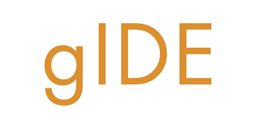Sufficient bone quantity and quality are crucial for successful dental implant treatment. For this reason, Nobel Biocare introduced creos regenerative solutions, an array of options for guided hard- and soft-tissue regeneration. The latest addition to the line is the creos xenogain bone substitute, which, together with the creos xenoprotect resorbable collagen membrane, now offers clinicians a comprehensive set of xenogeneic options for a wide variety of indications.
Creos xenogain—A foundation for implant treatment
The creos xenogain bone substitute has been developed with clinical needs in mind. It has been proven to be biocompatible,[1–4] and unique processing methods remove the bovine proteins and lipids.[5, 6] The natural bone matrix of creos xenogain is characterised by micro- and interconnected macropore structures.[5, 6] With a calcium–phosphate ratio that reflects the composition in human bone and a low crystalline structure, creos xenogain is accepted by the body as a suitable framework for bone formation.[6–8] Bone substitutes in the creos xenogain range have a slow resorption rate and act as a long-lasting scaffold, maintaining space for bone regeneration.[2]
Creos xenogain—Easy to handle
For quick and easy application of the graft, creos xenogain is delivered sterile and comes in a vial, syringe or bowl ready for mixing. In addition, creos xenogain collagen is a 10 per cent collagen composite that is available as a block or in a syringe to aid application of the material for certain uses, such as extraction sockets. There is also a choice of two granule sizes and up to four volume options, offering a wide variety of alternatives depending on the clinical indication and preference.
Creos xenoprotect—The natural barrier
Once the bone substitute has been applied, the resorbable creos xenoprotect membrane can be used to hold it in place and act as a barrier to soft-tissue ingrowth. Manufactured using highly purified collagen and elastin fibres, it possesses outstanding handling properties that make it easy to reposition and unfold. Hydrated in seconds, but with minimal size increase, creos xenoprotect can be trimmed when dry for accurate placement at the graft site.[9]
Once hydrated, creos xenoprotect provides successful bone augmentation of dehiscence defects at implant sites.[12] It is stronger than other non-cross-linked and chemically cross-linked membranes,[10] and with a higher pull-out force, it provides advantages in terms of suture retention.[10] As it is highly resistant to degradation, creos xenoprotect offers prolonged protection of the graft site, and its excellent vascularisation behaviour and tissue compatibility support fast healing.[11]
Each product in the creos range of xenogeneic solutions has been developed to optimise treatment results. This comprehensive selection offers biocompatibility, easy handling, slow resorption and variety. Whichever of these scientific, evidence-based options the clinician chooses, he or she can be confident of building a reliable foundation for implant treatment success.[1–9, 11, 12]
More information about creos regenerative solutions, including articles and cases, can be found at www.nobelbiocare.com/creos.
A list of references can be obtained from the publisher.
webinar


Mehrwert Guided Surgery im Hinblick auf konventionelle Implantatinsertion

webinar

Diagnóstico, Planejamento Protético-Cirúrgico e Relacionamento com o paciente utilizando o NobelClinician

webinar

How to grow your practice and increase patient acceptance

webinar

Insights on how we've grown our dental practice by 65%
webinar

Claves para el desarrollo de la consulta acortando los tiempos de tratamiento
webinar


Begin With the End in Mind: Digital Planning and Guided Surgery with NobelClinician to Facilitate Practice Growth



:sharpen(level=0):output(format=jpeg)/up/dt/2024/02/IDS-2025-Exhibitor-registration-now-open.jpg)
:sharpen(level=0):output(format=jpeg)/up/dt/2023/04/Amann-Girrbach-presents-digital-workflows-1.jpg)
:sharpen(level=0):output(format=jpeg)/up/dt/2023/04/Digital-workflow-for-dental-offices-and-laboratories_Niels-Plate_Dentsply-Sirona.jpg)
:sharpen(level=0):output(format=jpeg)/up/dt/2023/04/Immersify_Septodont_Biodentine_3.jpg)
:sharpen(level=0):output(format=jpeg)/up/dt/2023/04/CleanImplant-hosts-fifth-group-and-experts-meeting-at-IDS-2023.jpg)
:sharpen(level=0):output(format=jpeg)/up/dt/2023/05/IDS-2023-video.jpg)
:sharpen(level=0):output(format=jpeg)/up/dt/2023/03/HuFriedyGroup-at-IDS-2023.jpg)
:sharpen(level=0):output(format=jpeg)/up/dt/2021/10/EMS-%E2%80%93-IDS-2021-highlights.jpg)
:sharpen(level=0):output(format=jpeg)/up/dt/2021/09/Impressions-from-IDS-2021.jpg)
:sharpen(level=0):output(format=jpeg)/up/dt/2021/09/ACTEON-Interview-IDS-24.09.2021_Moment-xx.jpg)
:sharpen(level=0):output(format=png)/up/dt/2010/11/Nobel-Biocare-Logo-2019.png)
:sharpen(level=0):output(format=jpeg)/up/dt/2017/03/b6950c00f977ae338efb0f1199a5d39c.jpg)
:sharpen(level=0):output(format=gif)/wp-content/themes/dt/images/no-user.gif)
:sharpen(level=0):output(format=jpeg)/up/dt/2017/03/145d30898f58e05d7e429e30999e4ceb.jpg)

:sharpen(level=0):output(format=jpeg)/up/dt/2021/07/Nobel-Biocare-launches-new-dental-implant-cleaning-technology_2.jpg)
:sharpen(level=0):output(format=jpeg)/up/dt/2021/03/ids_19_013_011.jpg)
:sharpen(level=0):output(format=jpeg)/up/dt/2019/03/DSC_0528.jpg)
:sharpen(level=0):output(format=jpeg)/wp-content/themes/dt/images/3dprinting-banner.jpg)
:sharpen(level=0):output(format=jpeg)/wp-content/themes/dt/images/aligners-banner.jpg)
:sharpen(level=0):output(format=jpeg)/wp-content/themes/dt/images/covid-banner.jpg)
:sharpen(level=0):output(format=jpeg)/wp-content/themes/dt/images/roots-banner-2024.jpg)
 International / International
International / International
 Brazil / Brasil
Brazil / Brasil
 Canada / Canada
Canada / Canada
 Latin America / Latinoamérica
Latin America / Latinoamérica
 USA / USA
USA / USA
 Austria / Österreich
Austria / Österreich
 Bosnia and Herzegovina / Босна и Херцеговина
Bosnia and Herzegovina / Босна и Херцеговина
 Bulgaria / България
Bulgaria / България
 Croatia / Hrvatska
Croatia / Hrvatska
 Czech Republic & Slovakia / Česká republika & Slovensko
Czech Republic & Slovakia / Česká republika & Slovensko
 France / France
France / France
 Germany / Deutschland
Germany / Deutschland
 Greece / ΕΛΛΑΔΑ
Greece / ΕΛΛΑΔΑ
 Italy / Italia
Italy / Italia
 Netherlands / Nederland
Netherlands / Nederland
 Nordic / Nordic
Nordic / Nordic
 Poland / Polska
Poland / Polska
 Portugal / Portugal
Portugal / Portugal
 Romania & Moldova / România & Moldova
Romania & Moldova / România & Moldova
 Slovenia / Slovenija
Slovenia / Slovenija
 Serbia & Montenegro / Србија и Црна Гора
Serbia & Montenegro / Србија и Црна Гора
 Spain / España
Spain / España
 Switzerland / Schweiz
Switzerland / Schweiz
 Turkey / Türkiye
Turkey / Türkiye
 UK & Ireland / UK & Ireland
UK & Ireland / UK & Ireland
 China / 中国
China / 中国
 India / भारत गणराज्य
India / भारत गणराज्य
 Japan / 日本
Japan / 日本
 Pakistan / Pākistān
Pakistan / Pākistān
 Vietnam / Việt Nam
Vietnam / Việt Nam
 ASEAN / ASEAN
ASEAN / ASEAN
 Israel / מְדִינַת יִשְׂרָאֵל
Israel / מְדִינַת יִשְׂרָאֵל
 Algeria, Morocco & Tunisia / الجزائر والمغرب وتونس
Algeria, Morocco & Tunisia / الجزائر والمغرب وتونس
 Middle East / Middle East
Middle East / Middle East
To post a reply please login or register